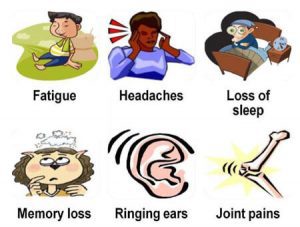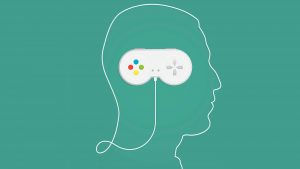Dr Sujit, a renowned doctor, cautions us about the many health hazards of mobile phones, in the first part of his two-part erudite research paper. We need to pause and ponder. An exclusive for Different Truths.
M – Member to minister
O – Office to orchard
B – Bank to banquet
I – Institution to ICU
L – Laboratory to lavatory
E – Elevator to engine room
A US patent was issued to Kentucky in USA in 1908. The cellular concept was made commercially available after reenactment in 1994. Average size of the equipment varied from 15 cms to 20 cms, so also the weight.
From landline to the era of mobile phone, more than 40 years of effort by Martin Cooper of Motorola Company, succeeded in creating a handheld subscriber equipment, on April 3, 1973. Cells for mobile phone base station was developed in 1940. A US patent was issued to Kentucky in USA in 1908. The cellular concept was made commercially available after reenactment in 1994. Average size of the equipment varied from 15 cms to 20 cms, so also the weight. Smartphone – a class of mobile phone with multipurpose mobile computing camera and flashlight device came into the market in 2010. Other names coined for this equipment, are mobile computing, mobile broadband and camera phone. Touch screen concept was incorporated in 2015. Functions like messaging, video effect and app, advantage were added in the following years. The Gorilla-alkali-alumunium-silicate sheet glass was used as damage and scratch resistant cover in 2005.
Once considered a luxury of the rich, mobile phones are now an every day gadget for people across the globe, from all walks of life. The number of mobile phone user in the world is expected to pass the five billion mark in 2019. The number of mobile phone users in India, crossed 581 million in 2014 and has been on steady rise over the past decade. According to a survey by e-Marketer in 2015, India is estimated to have over 800 million phone user in 2019.
The great Indian middle class is bringing in this change. The reasons, for this high penetration of mobile phones in India could be attributed to:
- A burgeoning young population in the country that is eager to adaption
- Growing middle class, capable of spending on consumer items and
- Intense competition among mobile phone manufactures in India, that is driving down the prices of mobile phone units.
The 21st century is throwing up some very modern health problems related to mobile phone use. The health hazards of uncontrolled use of mobile phone technology are many
The 21st century is throwing up some very modern health problems related to mobile phone use. The health hazards of uncontrolled use of mobile phone technology are many, to which every one need to wary.
Direct Effect
- Radiation hazard
- Screen addiction and mental health problem

- Anxiety
- Stress
- Sleep disorder
- Gaming disorder
- Nomophobia
- Eye Computer Vision Syndrome
- Dry eye
- Blue light effect – Aeging early
- Hearing impairment
Indirect Effects
- Muscle bone and joint problem
- Text neck
- Smart phone thumb
- Selfies and road traffic accidents
- Socialisation and SMS lingo effects.
A girl’s age of menarche has gone down from 10-15 years to 10-11 now. They start to acquire a strong sexual personality early. Parent, counsellor or teachers have not upgraded them and still want to believe that emotions are not normal for a child, who is 14 or 15.
Kids experience a complex emotions at a younger age now. A girl’s age of menarche has gone down from 10-15 years to 10-11 now. They start to acquire a strong sexual personality early. Parent, counsellor or teachers have not upgraded them and still want to believe that emotions are not normal for a child, who is 14 or 15. Sudden anger and rage from youngster on being denied phones or being scolded for spending too much time on line, could also be sign of under recognized psychological problem.
Screen Addiction and Mental Health
Mental health is the casualty in no uncertain terms. There is scientific basis to it. One study concluded that teen agers who use social media for more than 30 minutes a day are prone to risk, related to mental health. Also those teen agers who immersed themselves in social media for more than three hours a day, are at 60% higher risk of mental health related problem, compared to those teens who did not use the social media at all. The same holds true for adults (NIMHANS Study, 2019). The most common psychiatric disorder with on line addiction is attention deficit hyperactive disorder.
Sleep Disorder
Somehow, night time has always been a favourite among regular chatting and gossiping freaks, leading to sleep deprive for the user. Sleep disorders are associated with high mobile phone use. Interrupted sleep pattern, getting awakened in middle of the night due to mobile rings, vibration and increased use of mobile, post evening until midnight is common feature among kids, youth and professionals.
Stress
Twenty four hours and seven days a week, on their mobile exponentially increases stress levels.
Anxiety-Nomo Phobia
Imagining a day without a look at your phone seems impossible to day.
Nomo Phobia
Named as the Cambridge Dictionary’s word of the year, nomo phobia refers to the anxiety arising from not being able to use the mobile phone. A survey found that 53% of phone users become anxious without them and in extreme circumstances, it can even cause panic attacks (Phantom syndrome).
A survey found that 53% of phone users become anxious without them and in extreme circumstances, it can even cause panic attacks (Phantom syndrome).
A study report found that limiting the likes of Facebook and Instagram to 10 minutes a day over time, could actually reduce symptoms.
Gaming Disorders
With billions of mobile user playing gripping games, the recently classified gaming  disorder is an official mental health issue. Sufferers give priority to video games over their other daily activities. Symptom include a lack of sleep and neglecting social life. Upto 10% of gamers could be affected. Some countries like UK have launched specialist clinics for treatment of gamers aged 13 years to 25 years.
disorder is an official mental health issue. Sufferers give priority to video games over their other daily activities. Symptom include a lack of sleep and neglecting social life. Upto 10% of gamers could be affected. Some countries like UK have launched specialist clinics for treatment of gamers aged 13 years to 25 years.
Social media – Facebook, Instagram, Twitter, WhatsApp, Snap chat, Tik Tok, etc. are making people, especially the younger ones, mind-set changing. To say that they are getting addicted to mobile use in one way or other is not a myth but reality. Other members of household are also affected too though passively.
Muscles, Bones and Joints
Wii Knee – Constant bending of knees, while playing sporting games on consoles, can cause injury, and sprains on knee. Regular breaks, to avoid strain may reduce it.
Text Neck
Tilting your head while scrolling through those texts and Instagram posts can put 60 pounds of pressure on neck, according to spine surgeons. Prolonged use may cause muscles to become sore and inflamed – a condition that is known as Text Neck. Australian researchers found, this behaviour is causing some of us to develop extra lumps of bone at the base of our skull. Experts recommends, trying to look at your phone at eye level, along with posture exercises such as gently lengthening your neck up wards as you tuck-in your chin.
Smart Phone Thumb
One survey has found that 43% of smart phone users have experienced thumb pain from using their devices. All that repetitive fine motor activity, we use when swiping or typing on our phones can cause numbness as well as pain and cramping in the fingers, wrist and forearm. This may lead to carpal tunnel syndrome, where nerves are compressed or to inflammation known as tendinitis.
One survey has found that 43% of smart phone users have experienced thumb pain from using their devices. All that repetitive fine motor activity, we use when swiping or typing on our phones can cause numbness as well as pain and cramping in the fingers, wrist and forearm.
The American Academy of Orthopedic Surgeons also warn of a Mobile-elbow-caused by bending the arms too long while using mobile phones. Another condition called Cubital Tunnel Syndrome, which makes tasks such as opening jars difficult. Switching hand regularly and sending voice messages and not long typed out ones, may reduce the risk.
(To be continued)
Photo from the Internet






 By
By

 By
By